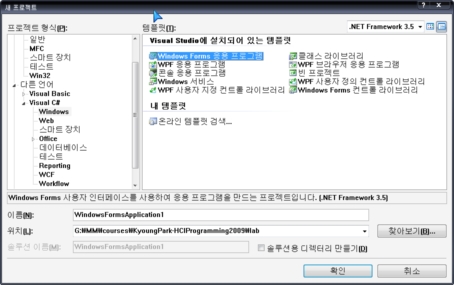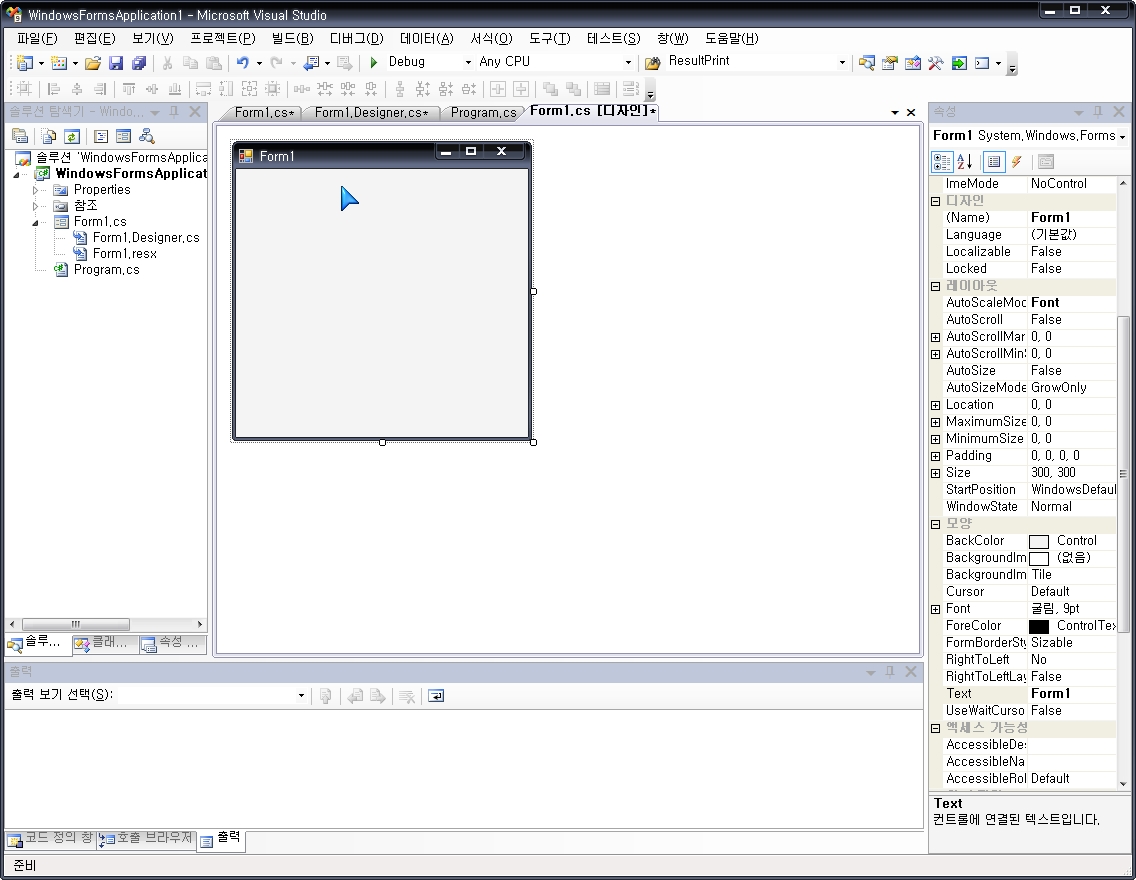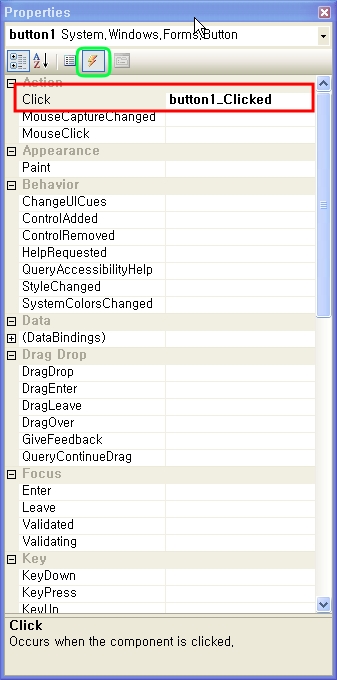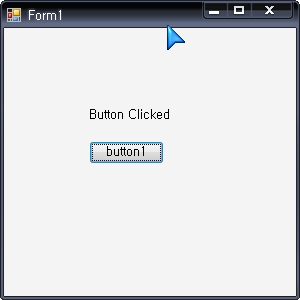.NET2008
Visual C# Windows Forms Application 프로젝트 새로 만들기
MFC Dialog-based App 프로젝트 새로 만들기
- 메뉴에서 File->New->Project->Visual C# 템플릿->Windows Forms Application를 선택한 후 “프로젝트 이름(예를 들어, ConsoleApplication1)”을 적고 확인버튼을 누르면 빈폼 프로젝트가 생성된다.


코드 추가
- Toolbox(도구상자) 에서 컨트롤을 선택(예를 들어, Label 또는 Button)하여 Dialog기반의 Form 안에 추가하여 편집한다.

컨트롤에 이벤트 추가하기

- 컨트롤 (예를들어, 버튼을 더블클릭하면 또는 이벤트목록중 Click이벤트에 더블클릭하면)에 클릭 이벤트에 대한 이벤트핸들러에 내용(예를 들어, 레이블의 Text를 “Button Clicked”)을 작성한다.
private void button1_Click(object sender, EventArgs e)
{
// button1을 클릭하면 label1에 “Button Clicked”출력
label1.Text = “Button Clicked”;
}
빌드(F7) 후 실행(F5)하기

